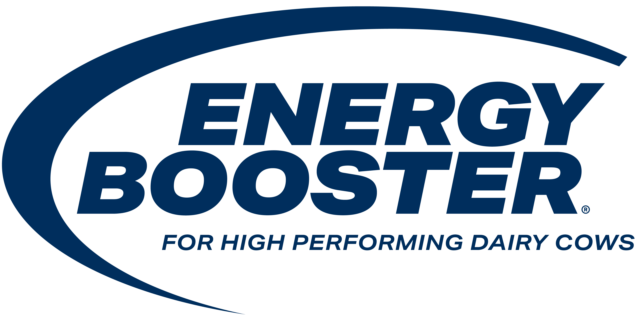What causes some transition cows to be less productive?
The transition from late gestation to lactation is a critical period for a dairy cow. When reviewing the performance of fresh cows on a dairy, it is not unusual to find that by seven days post-calving, some cows are producing milk in excess of 100 pounds per day, while other cows are not starting as strongly. What causes some cows to make this transition better than others? How can a dairy increase its percentage of fresh cows that are highly productive within the first few days of the lactation period? To answer these questions, we need to consider the dramatic changes that occur at the time of calving.
Hypocalcemia: A significant factor prohibiting transition cow success
When a cow is dry, her need for calcium is low; but as she begins to lactate, her demands for calcium skyrocket. For this reason, most cows experience a decline in serum calcium concentrations after calving. Researchers from Cornell University reported that cows that return to a normal calcium status by 96 hours post-calving are healthier and more productive than cows that do not reach a normal calcium status by this time.
Feed negative DCAD to achieve optimum fresh cow performance
Feeding a negative dietary cation-anion difference (DCAD) diet during at least the last three weeks of the dry period has proven to be a very effective strategy to reduce the incidence of hypocalcemia and allow fresh cows to return to normal calcium status quicker.
The goal of a negative DCAD diet is to increase the concentration of anions in the diet (i.e., sulfur and chloride) in order to offset the cations in the diet (i.e., sodium and potassium), which results in a lowering of blood and urine pH. A diet that achieves the optimum urine pH for a negative DCAD diet (between 5.5 and 6.0) is considered a fully acidogenic diet. This diet promotes calcium homeostasis, giving the cow the ability to manage blood calcium levels biologically.
Numerous research studies document that feeding a fully acidogenic diet to late-gestation cows improves calcium homeostasis in the fresh cow. Early research using negative DCAD diets utilized raw anionic salts, but this can be challenging because raw anionic salts are not very palatable and can result in a significant decrease in dry matter intake (DMI). However, when fully acidogenic diets are “done right” and DMI is maintained, they are highly effective.
Steps to “do negative DCAD right”
1. Start with the ration
Nutrient targets
The first step to doing negative DCAD right is to feed a properly balanced ration that promotes DMI, maintains body condition and provides an adequate level of nutrients (Table 1) to prepare the cow for the subsequent lactation period.
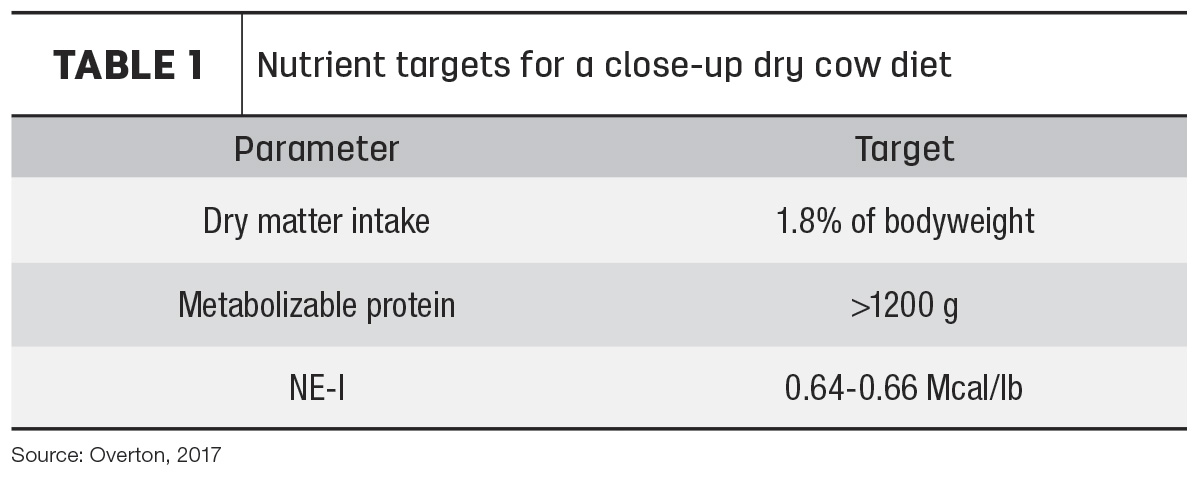
Mineral targets
A properly balanced negative DCAD diet requires proper mineral balance (Table 2).
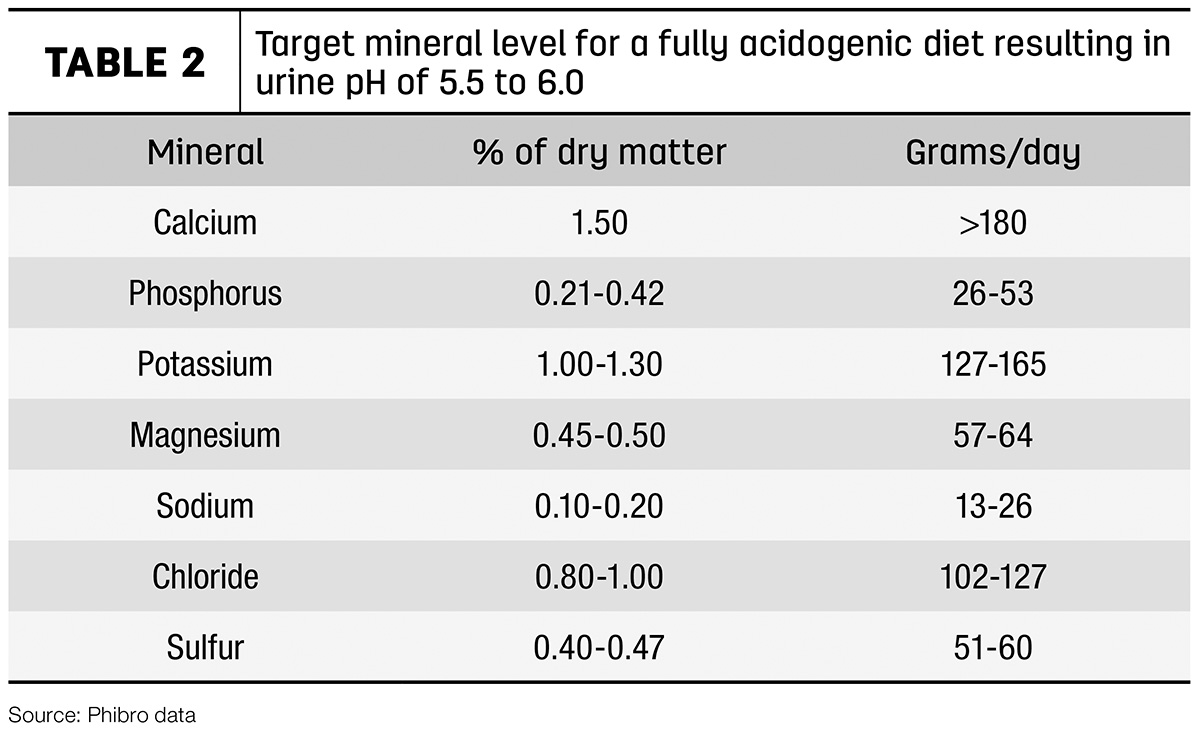
Dietary mineral supplementation
When implementing a fully acidogenic diet, it is recommended for a dairy cow to be fed a high level of dietary calcium. This recommendation is supported by research from the University of Wisconsin, which demonstrated when more than 180 grams of dietary calcium are fed in combination with a fully acidogenic diet, cows are more resistant to a decrease in serum calcium concentrations.
Providing an adequate supply of magnesium is also important. Magnesium is involved in the formation of parathyroid hormone (PTH) receptors, which play an essential role in allowing the cow to respond to low-circulating calcium by increasing calcium mobilization and retention.
Phosphorus is a key nutrient in supporting milk production. Immediately after calving, cows may not have an adequate intake of phosphorus to support the demand for this mineral. A fresh cow with low serum phosphorus levels can demonstrate many of the same symptoms as a cow with hypocalcemia. However, these cows will not respond to IV calcium because they are lacking phosphorus instead of the assumed calcium deficiency.
2. Transition cow management
The combination of good management and a well-balanced negative DCAD diet is key to a successful transition cow program. Less-than-ideal management in the transition cow pen can undo even the best negative DCAD diet.
Of critical importance are:
- Adequate feedbunk space (target is more than 30 inches per cow)
- Good cow comfort
- Decreasing social stress
- Proper mixing and delivery of the total mixed ration (TMR)
(Refer to the end for more information.)
3. Urine pH monitoring
Routine monitoring of urine pH is a good way to determine if the negative DCAD diet is being done right. If a cow’s urine pH falls outside of the recommended range (5.5 to 6.0), then adjustments to the diet and/or feeding management are needed to get cows back on target.
University research shows negative DCAD done right benefits the cow
Research conducted at multiple universities, including Cornell University and the University of Illinois, demonstrated that feeding a fully acidogenic diet with a high dietary calcium resulted in improved fresh cow performance.
In the study at Cornell University, feeding a fully acidogenic diet resulted in reduced subclinical hypocalcemia (SCH), increased postpartum DMI and increased milk production (Table 3).
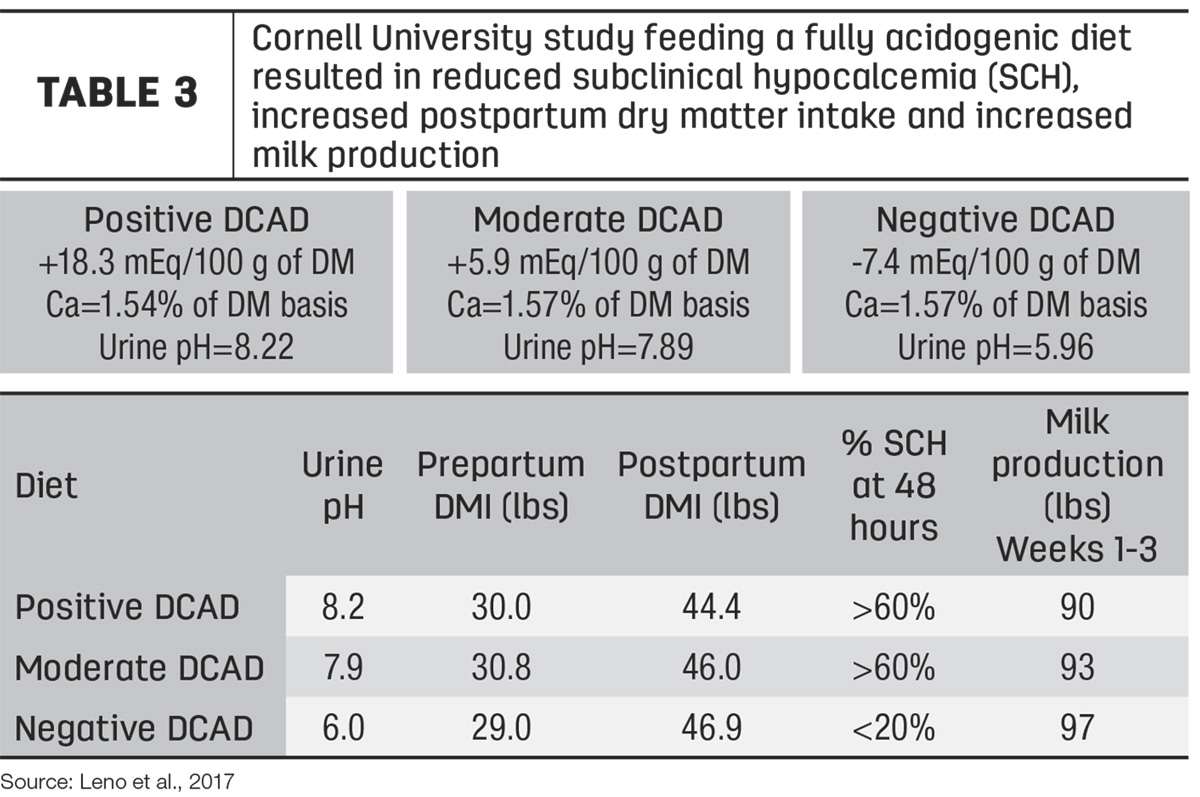
At the University of Illinois, their study demonstrated a fully acidogenic diet with a high level of dietary calcium resulted in the highest postpartum DMI and milk production. In addition, a fully acidogenic diet with high calcium resulted in improved reproductive performance by reducing the time to first ovulation (Table 4).
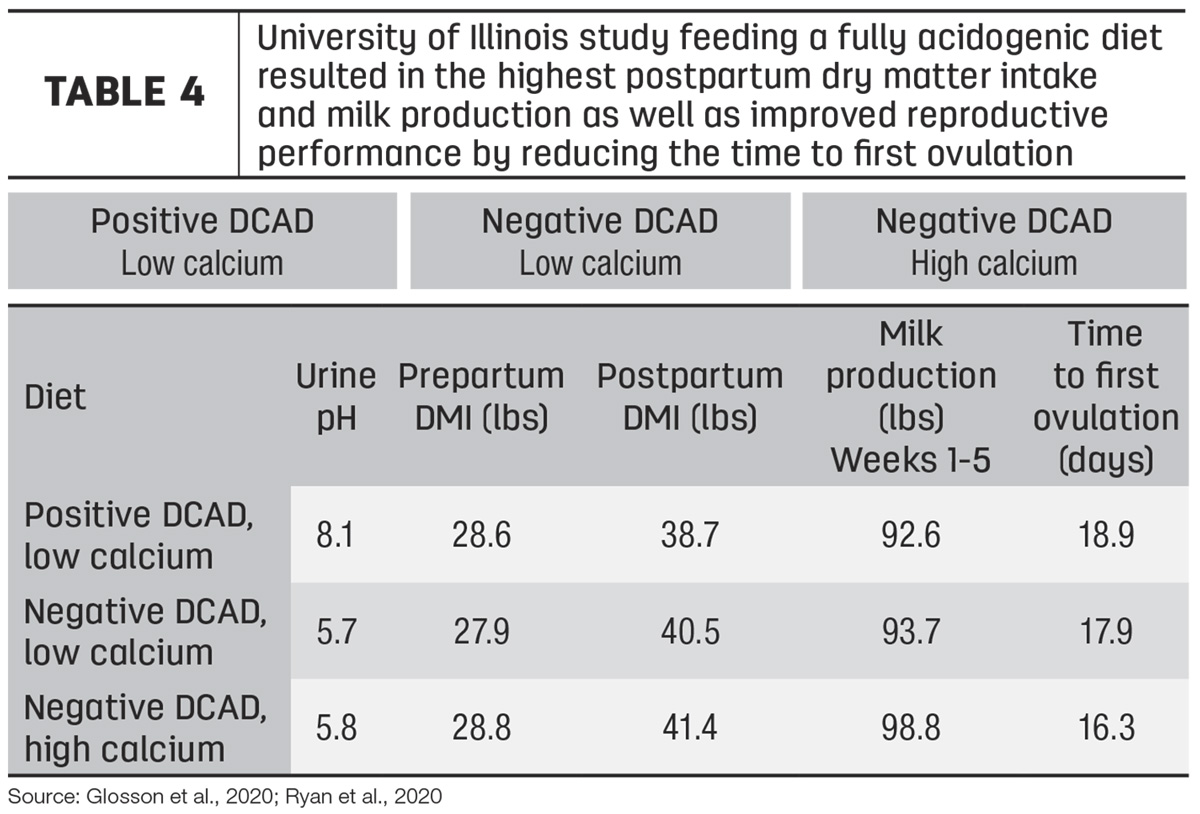 Conclusions
Conclusions
Feeding a fully acidogenic diet that is done right supports the mineral needs of cows transitioning from dry to lactating, resulting in improved DMI, higher milk production and improved reproductive performance. When a negative DCAD program is implemented well, a dairy can increase its percentage of fresh cows that are highly productive within a few days of calving. Feeding a well-balanced, fully acidogenic diet and consistently providing a high level of cow and facility management are key to making dairy cows healthier and allowing them to reach their genetic peak-milk-production potential.
Manage for success
- Avoid overcrowding: Provide more than 30 inches of bunk space per cow.
- For bedded pack barns: Provide at least 125 square feet of bedded pack per cow.
- For freestall barns: Provide at least one stall per cow (more than one stall per cow is preferable).
- Ensure cows eat the diet formulated by the nutritionist.
- Confirm accurate mixing/delivery of the ration.
- Minimize sorting of the ration by processing forages to less than 2 inches in length.
- Minimize social stress: Limit new cow introductions into a pen to one day per week.
- Target at least 21 days in the prefresh dry cow pen.
- Move cows to the maternity pen when they are in labor ("just-in-time” method).
- Provide the lactation ration that is fed to cows after calving and water in the maternity pen.


